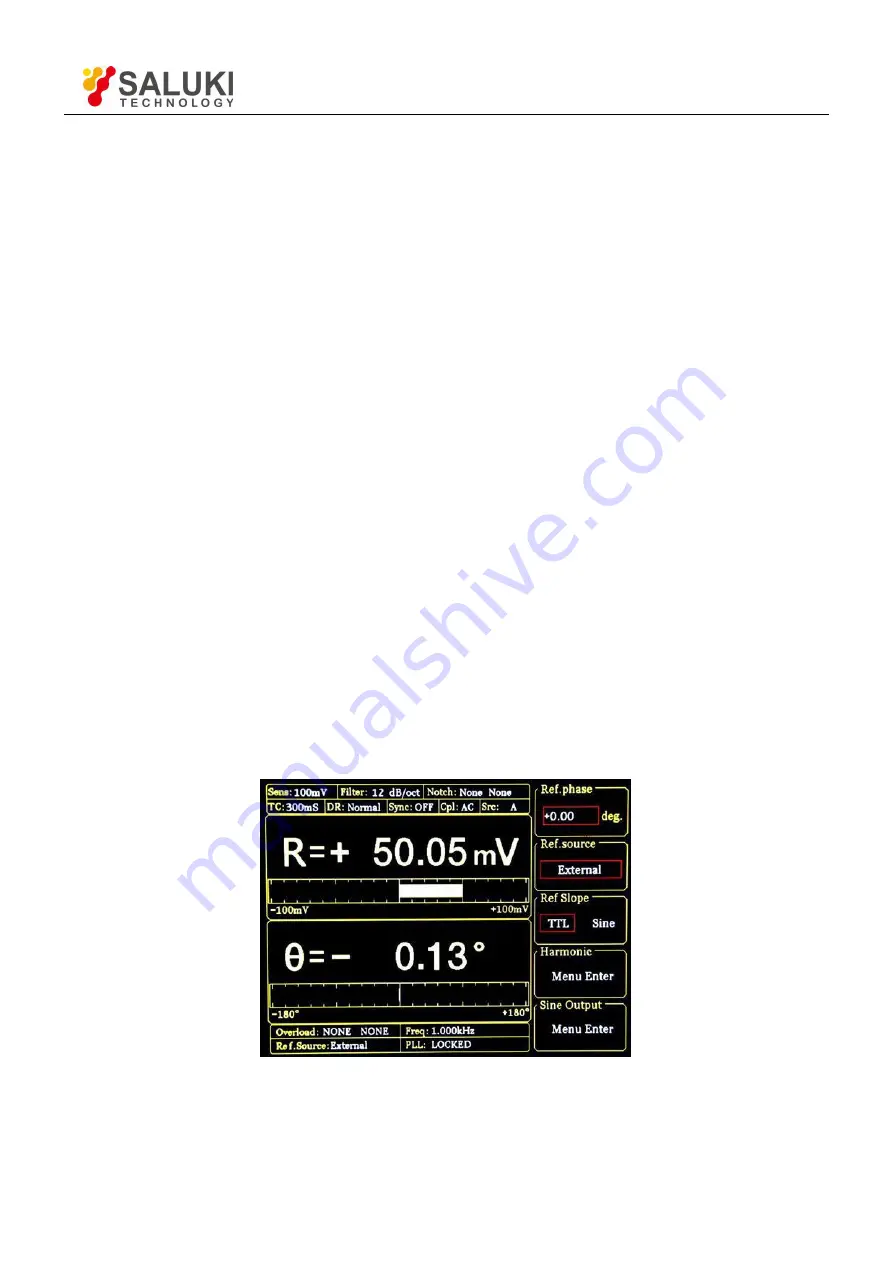
Tel: 886. 909 602 109 Email: [email protected]
www.salukitec.com
29
Generally, choose <Ground> when the current of the input signal is not large. It prevent signal drift caused by
floating. Choose <Float> when there is a large potential difference between the signal ground and chassis ground
and a strong current injection. This can limit the current and protect the system circuit.
3.1.4 < Coupling >: Setting the Coupling Input Mode
<AC>
AC coupling input mode. In this mode, the DC component of the input signal will be eliminated. If
the signal frequency is greater than 200 Hz, <AC> should be selected.
<DC>
DC coupling input mode. In this mode, the AC component of the input signal will be eliminated. If
the signal frequency is less than 200 Hz, <DC> should be chosen.
3.1.5 < Line Notches >: Setting the Status of the Notch Filters
<None>
Turn off all notch filters.
<Line>
Turn on the 50\60 Hz notch filter to suppress the power line interference.
<2
×
Line>
Turn on the 100\120 Hz notch filter to suppress the second harmonic interference of power.
<Both>
Turn on the 50\60 Hz and the 100\120 Hz notch filter.
Generally, if the signal frequency is greater than 200Hz, choose <Both>, <Line> or <2×Line>. Otherwise, choose
<None> to avoid the amplitude damage due to small slope of the notch filter.
3.2 [REF/PHASE]
Press [REF/PHASE] and enter its submenu. There are 7 function settings in the submenu, including <Ref.phase>,
<Ref.source>, <Ref.slope>, <Ref.frequency>, <Sweep>, <Harmonic> and <Sine Output>. Then choose different
<Ref.source>, there will be different submenus as shown in Fig.17, Fig.18 and Fig.19.
Fig.17 The [REF/PHASE] Submenu






























